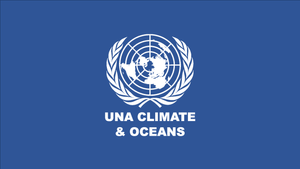Climate Change and Wildfires in Los Angeles: A Growing Crisis
The Link Between Climate Change and Wildfires
Climate change is playing a crucial role in exacerbating wildfire conditions. Higher average temperatures and shifting rainfall patterns are contributing to a drier landscape, which provides the perfect conditions for wildfires to ignite and spread. In Los Angeles, this means longer fire seasons, typically extending from the spring through the autumn, with some fires occurring even in the winter months.
The increasing frequency and intensity of wildfires in California are tied to hotter temperatures, as the state experiences more extreme heatwaves, making vegetation drier and more susceptible to ignition. This change is a direct result of the global climate crisis, where fossil fuel emissions trap heat in the atmosphere, causing a rise in average temperatures and disrupting natural weather cycles.
More Frequent and Intense Fires
Over the last few decades, wildfires in California have grown larger and more destructive. In 2020 alone, the state witnessed some of its largest wildfires on record, with millions of acres burned and thousands of homes destroyed. While wildfires have always been part of California’s natural landscape, the combination of human-caused climate change and urban sprawl has made the situation much worse.
Los Angeles, with its expansive urban areas bordering wilderness regions, is especially vulnerable. Fires often threaten not only rural communities but also densely populated urban neighbourhoods, leading to mandatory evacuations, damage to homes and infrastructure, and dangerous air quality levels. The 2017 and 2018 fire seasons were particularly devastating for the region, with the Woolsey Fire and the Thomas Fire being among the most destructive, leaving entire communities in ruins.
Air Quality and Public Health
One of the immediate impacts of wildfires is the deterioration of air quality, which can reach hazardous levels during large fires. Smoke from wildfires contains harmful pollutants like carbon monoxide, particulate matter, and volatile organic compounds, which can cause respiratory issues, especially for children, the elderly, and those with pre-existing health conditions.
In Los Angeles, which already struggles with air pollution, wildfires exacerbate health problems. During wildfire seasons, hospitals often see a rise in respiratory problems, asthma attacks, and heart conditions. Poor air quality can also lead to long-term health effects, particularly for vulnerable populations in areas affected by smoke for prolonged periods.
Wildfire Management and Urban Planning
As the risk of wildfires grows, local and state governments are increasingly focused on improving fire management strategies. However, the challenge remains substantial. Firefighting resources are often stretched thin during peak fire seasons, and the need for more controlled burns, better forest management, and public education has never been greater.
Furthermore, urban planning and zoning policies play a significant role in wildfire risk management. Los Angeles has experienced significant development in areas near wildland-urban interfaces, where urban areas meet natural landscapes prone to fire. Managing these areas requires a balance between growth and the preservation of fire-resistant zones, as well as investing in better infrastructure to help prevent and contain wildfires when they do occur.
Mitigation and Adaptation: What Can Be Done?
To mitigate the impact of climate change on wildfires, California is investing in renewable energy, stricter building codes, and wildfire-resistant landscaping techniques. State policies are also focusing on reducing carbon emissions to slow down global warming and protect vulnerable ecosystems.
However, adaptation is just as important. Communities across Los Angeles are increasingly engaged in disaster preparedness efforts. For instance, homes are being built with fire-resistant materials, and residents are encouraged to create defensible spaces around their properties to limit the spread of flames. Local authorities are also improving early warning systems, evacuation routes, and emergency response strategies to better handle wildfire crises.
Looking Ahead
The future of Los Angeles and California’s fight against wildfires is complex. While climate change is already worsening wildfire seasons, the region’s ability to adapt will largely depend on the actions taken now to reduce emissions, improve fire management practices, and create a more resilient urban environment. Without these efforts, the city faces a future where wildfires are more destructive, with an escalating threat to public health, safety, and the environment.
As Los Angeles grapples with this challenge, it serves as a powerful reminder of the urgent need to address climate change on a global scale. Only by reducing emissions, improving land management practices, and investing in sustainable development can we hope to mitigate the most severe effects of climate change and ensure a safer, healthier future.
Source: OpenAI by Tim Williams, Scientific Research Team (Released February 2025)
In recent years, Los Angeles has been at the forefront of the intersection between climate change and natural disasters, with wildfires becoming an increasingly alarming concern. Rising temperatures, prolonged droughts, and shifting weather patterns are intensifying fire seasons, leading to more frequent and devastating wildfires in and around the city. The growing crisis not only threatens lives, homes, and ecosystems but also poses a serious challenge to the region’s resilience and sustainability.



